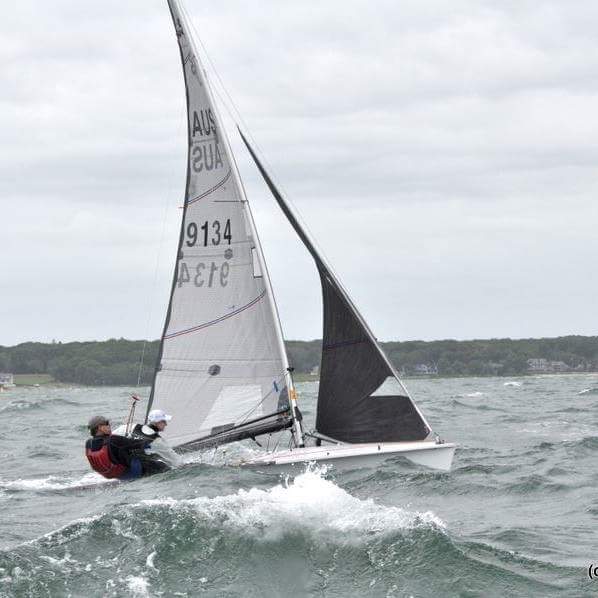

Roll Tacking – How and Why
Tacking the boat is one of the first things that we learn when we start sailing. We also learn what head to the wind is and that most boats sail upwind at about 45 degrees to the wind. This is basic knowledge but is not something simply to be learned and never revisited.
Perfecting a roll tack is not easy, and has many parts to it. However, when perfected, your advantage over other boats is significant.
Differences between a Good and Great Roll Tack
One of the biggest differences between a good roll tack and a great roll tack is the timing of the roll.
Unless it is very windy, rolling the second the jib backwinds is not ideal for effective tacks. Many sailors get really excited, and roll before the boat is ready. It’s natural to think that the faster you start your roll, the faster the tack is.
By rolling too early, you will get less help from the sails to turn the boat. This will actually steer the boat down with your weight while turning up with the tiller.
This creates a lot of friction between the rudder and the water. You will have to steer much more to turn through the wind, slowing your boat down.
Backwind the Jib
Backwinding the jib helps the boat turn during a tack significantly, therefore, the longer you allow the jib to backwind, the less rudder you will have to use to steer through a tack.
As a general rule of thumb, you want to wait till the boat is at or just past head to wind before rolling the boat. Waiting until this point will allow you to use less rudder, and will also allow you to use the wind to help roll over the boat.
If you go earlier, you will roll the boat against the face of the wind, forcing you to use much more effort to roll the boat over.
There is no exact time to wait before rolling the boat over, and it will change depending on the wind. For example, in light air, you want to wait a relatively long time before rolling over the boat, as it will take longer for the sails to help you steer through the wind.
If it is really windy, you may want to cross sides quickly, as soon as the jib backwinds. As soon as both sailors are hiking, you should not roll at all.
Instead, you should still use the sails to keep power in the boat the entire time, and simply switch sides and start hiking, when the jib backwinds.
HOW TO ROLL TACK
- To initiate a roll tack, heel the boat to leeward to initiate the turn into the wind.
- Steer smoothly into the wind and squeeze in on the mainsheet.
- Uncleat the jib and be ready to move. As the boat reaches head to wind, both crews stay on the windward side.
- The sails will depower – the jib will flap first – and the boat will roll on top of you.
- Remain on the (old) windward side until the boat has turned through the wind.
- Back the jib until the boom comes over and ease the mainsheet a bit as you begin to move
- Keeping the steering smooth, centralise the tiller as both helm and crew now move to the new windward side.
- Time your movements to be at the same time with the helm and crew hitting the new windward side.
- Bringing the boat flat helps you to bear away onto the new tack without needing to over-steer.
- Sheet in on the mainsheet as you flatten the boat. This is where you feel the speed gain. Set the jib for a fast mode then squeeze on once you’re up to speed.
WHY ROLL TACKING IS IMPORTANT
Being fast upwind is usually the key to winning and tacking well is an essential component of this upwind speed.
As is always the case with sailing, there is no limit to how often you can practise tacking and still improve.
Even at the highest level of our sport, this basic manoeuvre can be the difference between victory and defeat.







